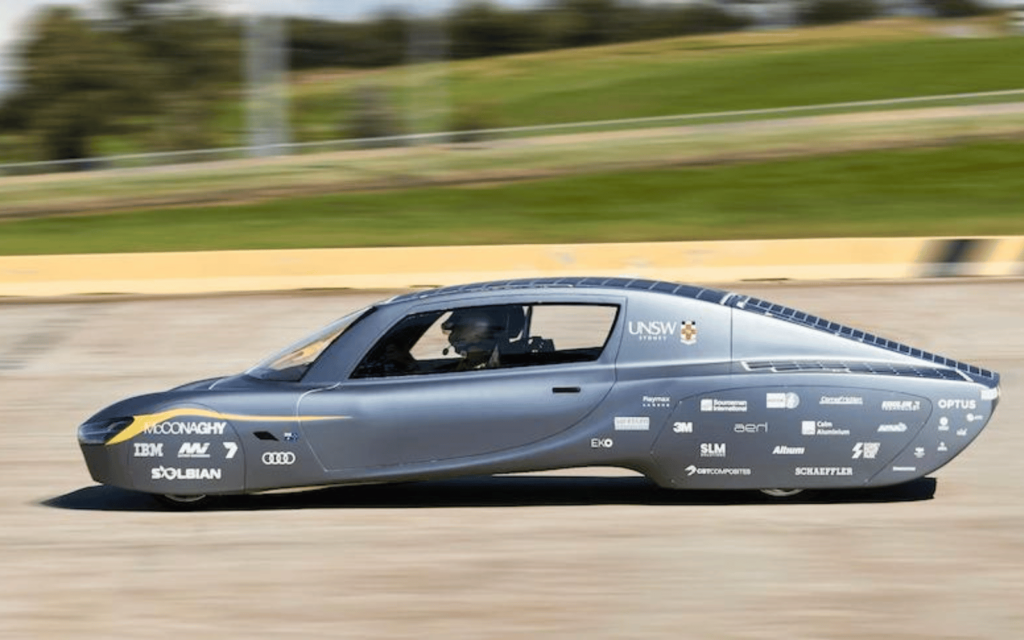The world of solar-powered car racing is more extensive than you might think. Heck, even South Africa has gotten into it, in the form of the Ilanga Cup and the Sasol Solar Challenge. Teams of engineers compete to build their own solar racer and pit them against each other in endurance races. And the Sunswift 7 has just set a new Guinness World Record in a 1,000km race, completing it eight minutes faster than the previous holder.
The Sunswift 7 was built by a team from the University of New South Wales (UNSW). It clocked in its 1,000 kilometres in under 12 hours – all on a single charge. It averaged a speed of 85km/h, circling Victoria’s Australian Automotive Research Centre 240 times to claim the certificate.
The Sunswift 7
The cars that compete in these races are small. Very small. They stand at around half the height of the average person and weigh around 500kg in total. The body’s shapes are all designed to be as aerodynamic as possible. They’re also covered from windshield to windshield in solar panels which power the battery inside the body.
Read More: Going solar: Govt investigating upgrading South Africa’s public hospitals with solar power
Team leader, Richard Hopkins, former head of Red Bull Racing operations said his team had to contend with significant challenges on the day. A tyre puncture and a battery management issue caused the Sunswift to pit for 14 minutes and 52 seconds – cutting it 8 seconds close to what the rules of the race allow.
“Let’s remember these are not the best-paid professional car makers in Stuttgart working for Mercedes,” he said.
Richard Hopkins said that he didn’t think the Sunswift 7 would be “a production car of the future” due to the cost of putting a vehicle like this together. He added that its design could instead be used to inform the engineers creating future fuel-efficient vehicles.
It’ll be interesting to see what the Sunswift 8 will look like for the next major event it participates in. The success of this model will help the team find what was right and more importantly, what was wrong with it. That can only lead to a more effective design.
Source: UNSW




